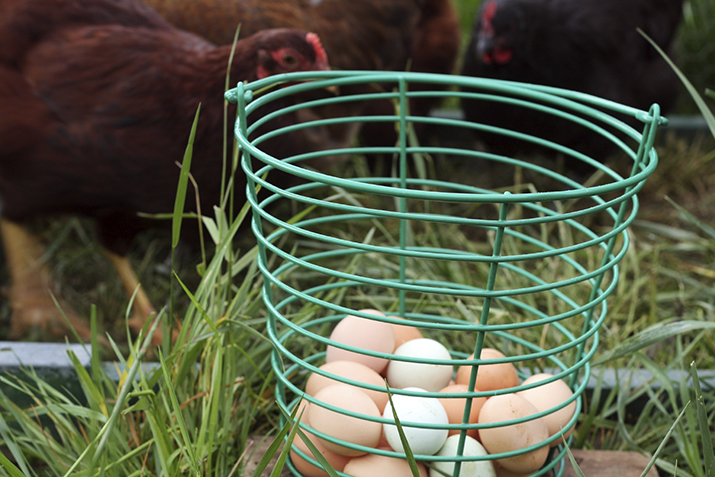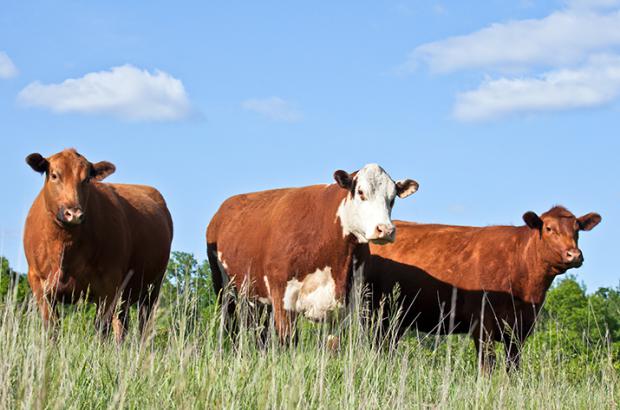Article
The Chicken and the Egg: Egg Labels and Production Methods

For such a simple food, buying eggs can be complicated. Eggs come in various colors, sizes, and grades and from chickens that are housed, fed, and treated differently. Short of raising your own chickens, how can you tell what's what when it comes to eggs?
Grade
If a carton of eggs sports the voluntary USDA shield, these are the criteria used for the grading: Grade AA eggs have thick, firm whites; yolks that are high, round, and practically free from defects; and clean, unbroken shells. Grade A eggs are the same as Grade AA, except that the whites are "reasonably" firm. Grade B eggs might have slight stains on the shells, the whites may be thinner, and the yolks wider and flatter than AA or A eggs. If the eggs have a grade without the USDA shield, it means they've met specific state standards.
Color
The eggshell color—white, brown, pink, and even green and blue—simply depends on the breed of chicken and has no effect on the egg’s quality or taste.
Size
This doesn't refer to the dimension of each egg, but the minimum weight required per dozen eggs, from peewee (15 ounces) to jumbo (30 ounces). Most recipes are based on large eggs, which weigh in at 24 ounces per dozen.
Habitat
Unfertilized eggs mean that the hens were housed without roosters.
Fertilized eggs are produced from cohabitating hens and roosters. (But don’t worry—refrigeration stops cells from growing and prevents embryos from forming.)
Cage-free* hens are allowed to roam inside barns or warehouses, but they don't necessarily have access to the outdoors. Uncaged chickens can engage in some natural behaviors that caged birds cannot, like walking, nesting, and perching.
There are many certifications verified by USDA for humanely raised chickens; some set standards for hens’ space and access to the outdoors, and some also prohibit forced molting (via starvation) and/or beak cutting.
Free-range and free-roaming* apply to hens that are cage-free. There are no regulations for exactly how these hens are raised differently from “cage-free” hens, but the understanding is that true free-range eggs come from hens that forage on pasture for green plants and insects.
Pastured or pasture-raised* eggs come from hens raised outdoors on grass
* Refers to terms not regulated by nor certified through USDA (or other organizations recognized by USDA).
Nutrition
Fortified eggs contain supplemental nutrients. In order to boost the amount of a specific nutrient in eggs, chickens may have their diets tweaked—added flax for increased omega 3 fatty acids or marigold extract for more lutein, for example.
Certified organic eggs come from chickens raised on organic feed and without the use of hormones or antibiotics. As regulated by the USDA National Organic Program, they are given access to the outdoors, though the type and amount of access are undefined.
Vegetarian eggs are produced by hens whose feed is free of animal by-products. This term is not regulated nor certified, and while the absence of animal by-products in feed is praised by many, the vegetarian label is also criticized since a natural diet would include hens foraging for grubs.
While some suppliers assert that there's no nutritional difference between eggs raised by different methods, studies conducted by Mother Earth News conclude that compared to USDA nutrient data for commercial eggs, eggs from pastured hens may contain one-third less cholesterol, a quarter less saturated fat, two-thirds more vitamin A, two times more omega-3 fatty acids, three times more vitamin E, seven times more beta carotene, and four to six times more vitamin D.
Of course, these labels don't always guarantee the living conditions and production methods used. Co-ops often offer eggs from local suppliers and/or producers that use the most humane methods, making them a good source for finding the most nutritious, most humanely raised eggs. Which labels do you look for when picking up a dozen?













